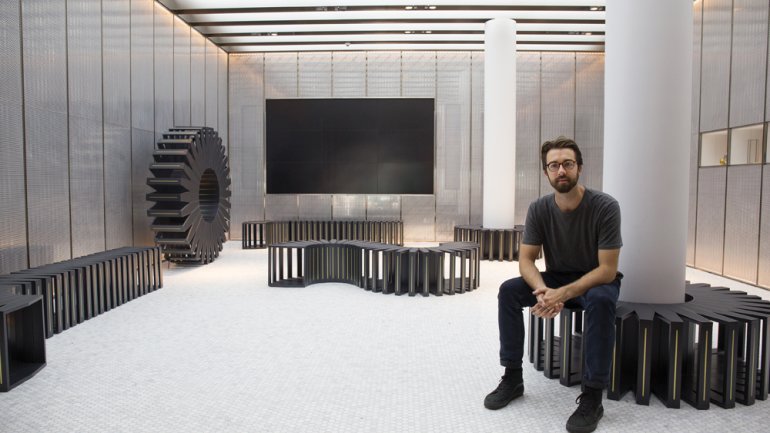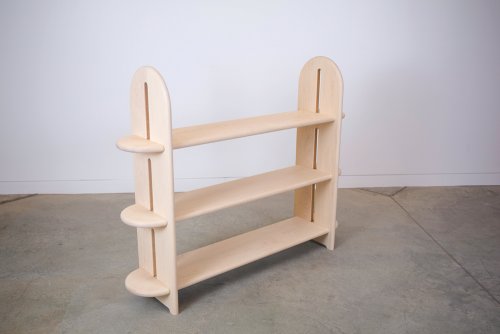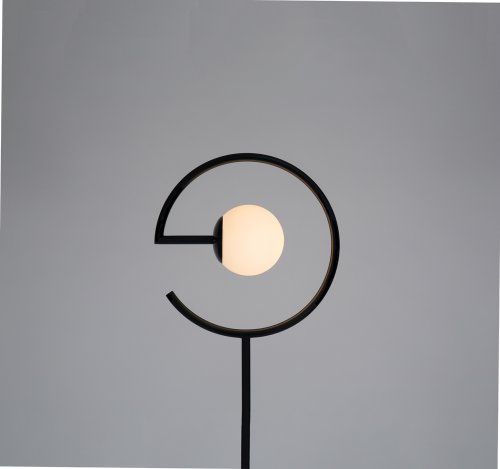Tim Miller Studio
Tim Miller Studio
As a child, Tim Miller loved watching his dad do projects around the house, whether he was building a woodshop in the backyard or fixing a broken chair. It inspired Miller to work with his own hands and pursue an undergraduate degree in sculpture at Taylor University in Indiana. When tasked with designing a chair during his sophomore year, he discovered both his passion for building furniture and his future career.
Shortly after graduating in 2015, Miller opened his eponymous furniture and lighting studio, where he began creating pieces rooted in mathematical systems. For his designs, he starts with simple flat shapes, then repeats, rotates, or morphs them into modular, functional pieces. His designs have a strong sense of plasticity and transformation: benches coil into circles or S-shapes, tables stack to become one, shelves adjust for height and rhythm. Their mutability provides helpful solutions for small living spaces, which often must perform double or triple duty.
The 27-year-old, who earned a graduate degree in furniture design from Rhode Island School of Design last spring, now lives in Brooklyn, New York, where he balances a job designing for Swiss manufacturer USM Modular Furniture with his own studio practice. He says he gets design inspiration by closely observing the inner workings of everyday objects and “the built environment around me,” noting that his phone is filled with photos of drainpipes, bridges, and lampposts – things that aren’t necessarily meant to be beautiful or noticed.
Nearly all of his pieces have elements that can be moved into different positions. To do this, Miller not only thinks about how a piece’s individual components relate to its whole, but also how people might want to manipulate it. “By building a bit of openness into a design, it allows the user to connect with an object on a deeper level than if they were interacting with something that was fixed or determined,” he says. His pieces are pleasing to look at, but they’re designed to be used, “gathering the dirt and grime that all functional objects should.”
Space constraints – such as those of his 450-square-foot apartment – offer Miller an exciting creative brief. “I think restrictions make for the most interesting design challenges,” he says. A current project: a table that can accommodate up to eight people yet folds back to save space. Miller says that he gets a lot of joy living with the pieces he’s built. “It serves as a reminder of all the steps that have led me to where I am in my career.”
Making It Work
Live and Learn: “The best way to critique your work is to live with the prototype,” Miller says. The practice helps him see his designs from his clients’ perspective and shows him how different materials wear with time and use. That forces him to think harder about the function of his designs, he says, “because nothing is worse than having ‘functional’ objects in your life that add more stress due to their lack of functionality.”
Unexpected Pleasures: Miller’s favorite piece to live with is his Slot Shelf, which lacks hardware and can be assembled without tools. “I love the directness of the design and have discovered so many hidden functionalities that I hadn’t intended,” he says, citing how useful the semicircular shelf extensions are for displaying small objects.






